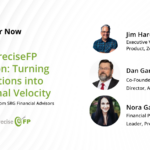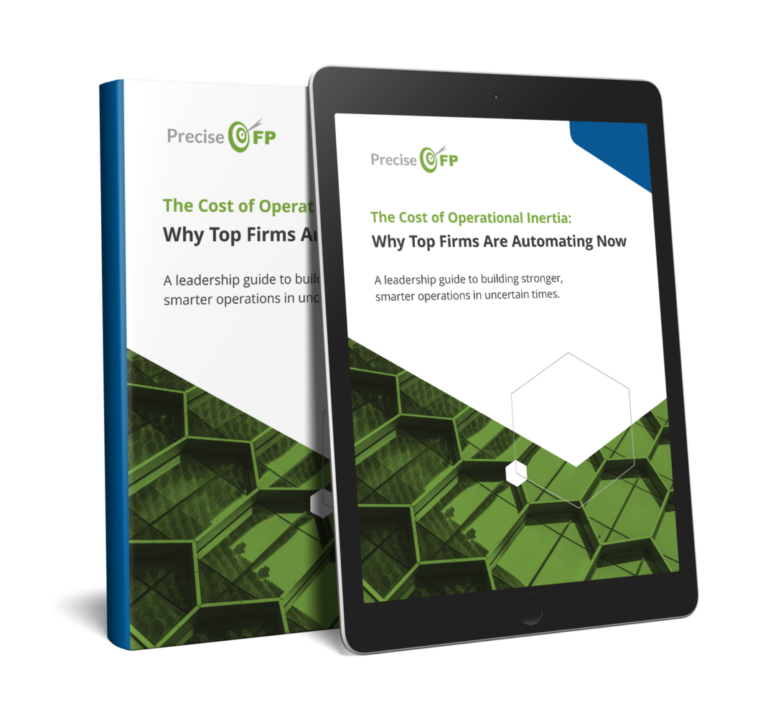In today’s tech-driven landscape, harnessing technology’s full potential remains a challenge for many firms. The primary culprit? Lack of integration.
InvestmentNews Research’s 2022 Adviser Technology Study reveals that a staggering 57% of advisors consider integration gaps their biggest technological obstacle. The manual requirement to get data from one software to another compels advisors to juggle multiple applications, squandering time and impeding productivity. On average, firms rely on five separate technology vendors, each selected individually. That’s a lot of tabs open on an internet browser. However, breaking this cycle is within reach.
Firms often echo the sentiment that “you don’t know what you don’t know.” The realm of software options within a tech stack can be overwhelming, encompassing factors like learning curves, training, maintenance, and migrations. The decision to introduce new technology needs a tangible return on investment before starting. This is where visualizing the flow of information and workflow for each procedure becomes essential. But what software is most important? Asking yourself this successfully can eliminate redundant data entry and establish a repeatable, scalable process. During the sales process, it’s paramount to ask questions about integrations, migrations, training, available templates, customization, security, and more. By viewing technology acquisition as a growth strategy and aligning it with your firm’s processes and objectives, you can optimize your long-term investment, ensuring a smoother transition to new tools and systems in the near future. Here are 5 factors to consider.
Managing Integrations for Maximum Success
Advisory firms are acquiring or partnering with fintech companies more rapidly than ever before. In 2019, 49% of financial institutions regarded fintech partnerships as important to their business. That number was 89% by the end of 2021.
Unfortunately, lack of integration is a primary reason for acquisition failures. Although some firms consider their dissatisfaction with financial technology software to be an information technology issue, the problem may not be technical. Traditional integration practices, which consolidate new technology into a firm’s existing infrastructure, may respond to immediate concerns but don’t always account for organizational needs and future growth.
Alternative integration strategies incorporate the firm’s processes, goals, outcomes, and culture into the acquisition of new technology. When firms take a holistic view of their goals, technology becomes a growth strategy. This allows advisors to align their technology with current and future needs rather than adopting patchwork solutions to assist with specific tasks. Some firms take advantage of customer experience management (CXM) technology to address fragmentation issues, integrating disparate processes into a more aligned customer experience.
Whether you use CXM technology or not, treating your technology acquisition as a growth strategy and including your firm’s processes and goals in your decision will help maximize your investment in the long term and create a smoother transition to new tools and systems in the immediate future.
Integration: Which Fintech Solutions Live Up to the Promise?
You may be familiar with this scenario: You invest in new technology, but it doesn’t live up to expectations. Unfortunately, that’s all too common.
When you’re selecting the best integration-friendly technology for your firm, consider five factors in your decision to help avoid tech regret:
1. CRM Compatibility
Many firms use their CRM as the hub of their tech stack. If your software doesn’t integrate seamlessly with your CRM, you’ll be switching between tools every time you contact a client.
2. End-to-end Workflow
Your software solution should provide solutions for every step of the client experience. When the entire process is automated within a single ecosystem, you don’t have to exit and enter multiple applications. Your client experience will be much smoother if you can access client contact information, update documents, add new beneficiaries, and track accounts within the same application.
3. Compliance Tools
To help avoid time-sucking situations like rejections and NIGOs (not in good order rejections) with a new client, you need built-in compliance tools to validate documents before they are submitted.
4. Single Document Storage Location
Many firms store documents in multiple locations. This creates potential errors, especially if you have multiple clients within the same family or frequently update documentation. With a single document storage location, you only need to change information once to update all records automatically.
5. End-user Experience
Your software solution should be easy to use, not just for your advisors and employees but also for clients. Training employees to use new technology may be expensive if there’s a steep learning curve. The same holds true for clients. When clients complete documents, the process should be intuitive. Make sure client-facing applications are responsive, helpful, and easy to use.
When considering a technology upgrade, you may be tempted to buy the first solution that responds to your immediate needs. But if your software doesn’t fully integrate with your tech stack, you may regret your investment. When you consider the needs of your clients and your firm’s goals, processes, and growth, you’re better equipped to find a lasting solution. It’s also helpful to weigh the software’s performance against factors such as CRM compatibility, end-to-end workflow, and compliance tools. This prepares you to find an effective, powerful, and fully integrated fintech solution that will improve your client experience and automate multiple processes.
Are you prepared to witness firsthand how PreciseFP can elevate your data-gathering process and elevate your practice? In working with offices PreciseFP increases prospect-to-client percentage rates and eliminates major bottlenecks. Click here to sign up for a free 7-day trial.










